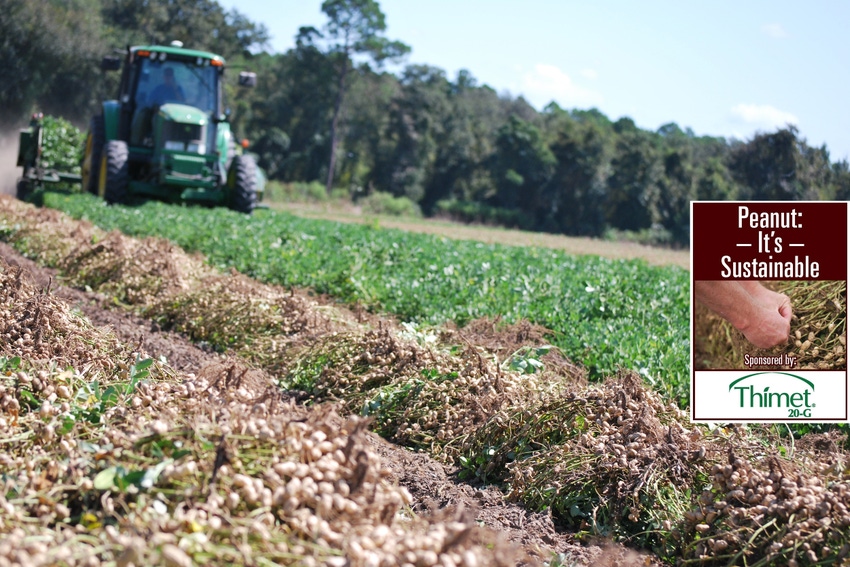
The U.S. peanut industry is investigating and fervently championing the peanut’s sustainability story, actively responding to consumer demand and doubling down on increased per-capita consumption for peanuts, which is one of the most sustainable (if not the most sustainable) source of nut protein available.
The Southeast Farm Press series “Peanut: It’s Sustainable” will highlight the U.S. peanut industry’s efforts to collect data to help peanut farmers and the industry refine and bolster (and staunchly back up with solid data) peanut’s sustainability story, and discuss the ways peanut farmers and the industry excel in sustainable practices and what can be done on the farm and in the peanut processing to make practices even better.
Consumers, especially the all-crucial millennials which outnumber and outweigh economically the baby boomer generation, want to know more about how their food is made and where it comes from. And the word ‘sustainability’ catches their ears, becoming a strong draw in the marketplace today. Through ongoing efforts by the National Peanut Board, American Peanut Council and state and regional peanut commissions, U.S. and global consumers now know more than ever the nutritional power punch of the peanut and are learning more about its sound environmental footprint.
The word ‘sustainable’ means various things to different people. But for peanuts, the sustainability story starts on the farm, said Marshall Lamb, research director of the National Peanut Lab in Dawson, Ga., who has participated in projects for, done analyses to quantify and spoken publicly about peanut’s sustainable story.
“Peanut farmers know peanuts are a very sustainable crop with a strong nutritional component, economic component and an excellent stewardship component. The industry is doing a good job getting that message out to consumers and will continue to do so because we know it makes a strong impression on the purchasing decisions of consumers,” Lamb said.
The peanut plant is inherently resourceful with both deep and laterally spreading roots. It efficiently uses water and fertilizer, and, as is known by those who know the legume, it uses the nitrogen it naturally fixes from the environment. Recent data shows it takes 4.7 gallons of water to produce one ounce of shelled peanuts. That same data shows it takes 80.4 gallons of water to produce one ounce of shelled almonds, 73.5 gallons of water to produce one ounce of shelled walnuts and 18.8 gallons of water to produce one ounce of pistachios.
Through the judicious use of inputs and resources, U.S. peanut farmers are as equally resourceful as the plant they grow and now produce the lowest-priced, highest-quality, environmentally sound peanut in the world.
The series is sponsored by Thimet and will appear in five issues of Southeast Farm Press over the next few months, leading up to the final installment in the Farm Press Peanut Efficiency Award issue July 5, which is the SEFP issue right before the Southern Peanut Growers Conference this year in San Destin, Fla., July 20-22.
About the Author(s)
You May Also Like






